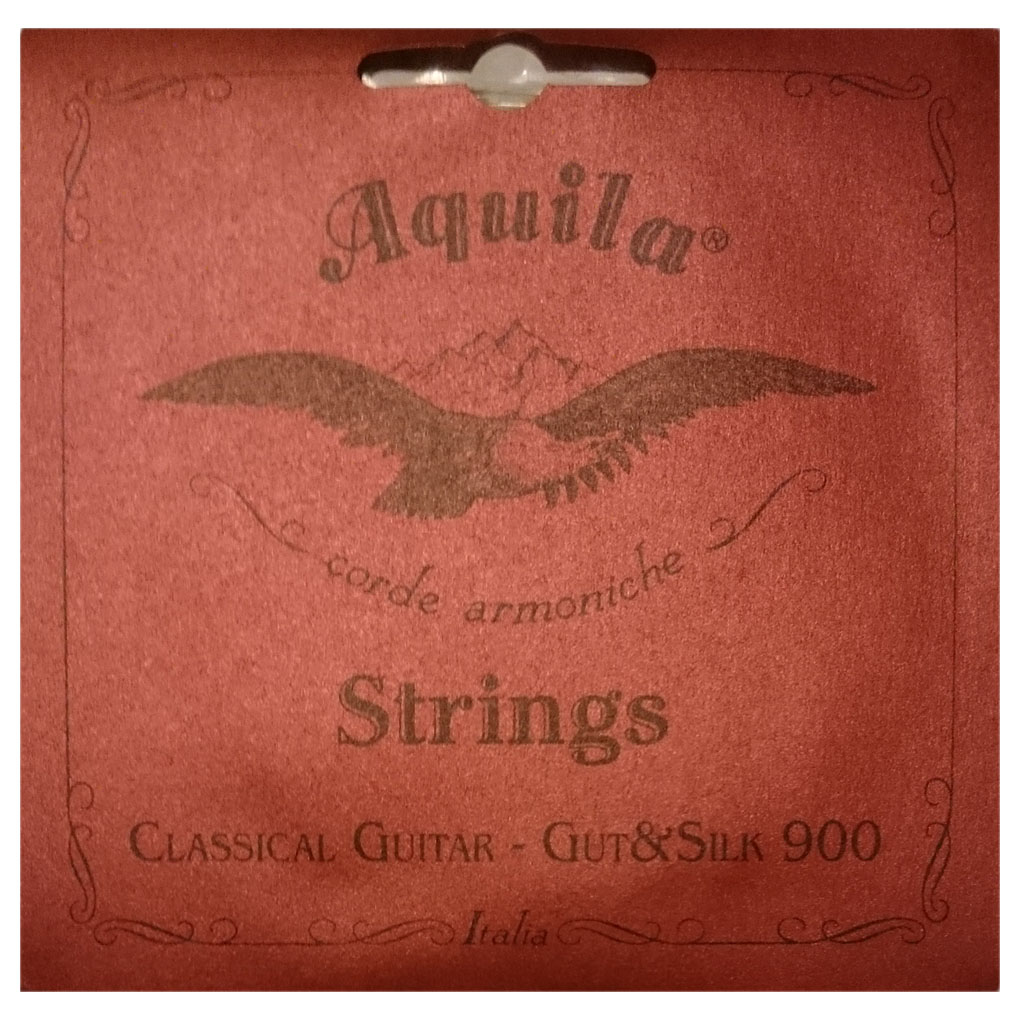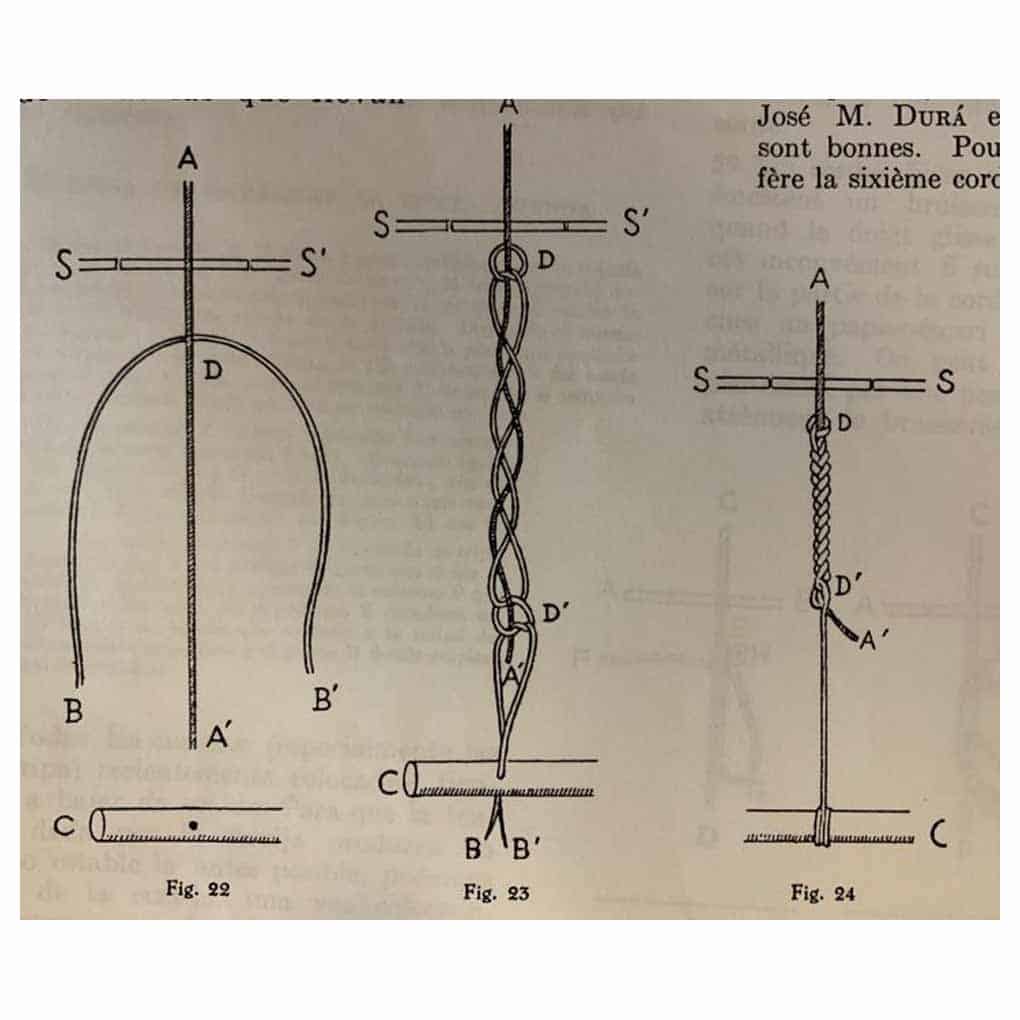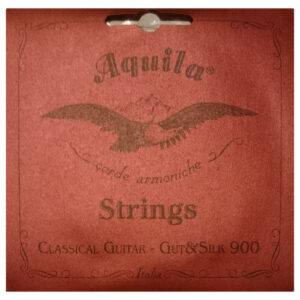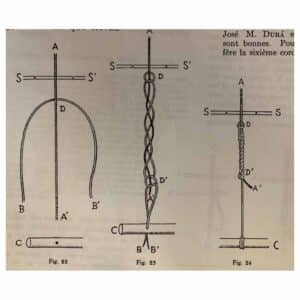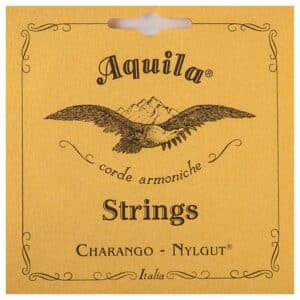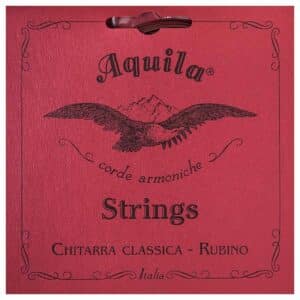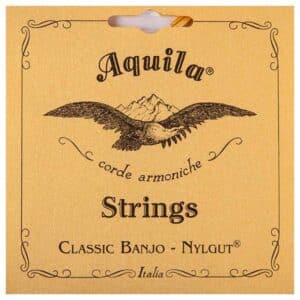Description
Gut & Silk 900 – For 1870 – 1946 Performances
Up to the middle of the 20th century, the only available strings for guitar were plain gut for the trebles and wound on silk core for the basses.
Their acoustical performance was quite different than that of modern synthetic strings.
Their main characteristics were a marked tonal presence, response and brightness typical of the gut strings, while the silvered copper wound basses on the other hand, possessed an exquisite vocal quality i.e not so bright and with less sustain than modern wound on nylon strings, and more fundamentally heavy.
Unlike modern guitar sets, the tension profile of the treble strings in these historical sets are only lightly scaled to replicate the standard of thier time and the sets come in only one tension as was also the norm.
The Aquila 900 historical set has been created in exactly the same historical assembly typical of the Llobet and Tarrega period to re-produce the sound of these times as indicated by Pujol in his ‘Escuela Razonada De La Guitarra’ from 1934.
Useful Information
Historical Guitar Sets – Suitable for A-435 Hz Pitch
For those using gut strings for the first time, please understand they cannot be handled in the same way as Nylon or Fluocarbon strings (PVF).
Gut strings have much higher production costs than those of plastic materials due to long and difficult working procedures. Each handmade string requires 12-15 days of labour to produce.
Remember that the lifespan of a gut string (only a few days in regards to the treble string) is traditionally much lower than that of modern Nylon and Fluocarbon strings due to the wearing action of right hand finger nails and metal frets. To improve the lifespan of your strings, please keep nails short and oval shaped.
In practice, the treble (1st) string normally lasts around 2-7 days, just as it did in the time of Llobet.
Gut strings are not as smooth as those made of Nylon or Fluocarbon as the modern player is used to. The surface feels similar to satin and may require some tactile and psychological adaptation to get used to.
The sound of silk wound bass strings is also very different to modern wound strings made from Nylon multifilament. The silk bass sound is less persistent, more percussive has poor overtones.
Please understand these specifications are perfectly normal for this type of string and are certainly not manufacturing faults. On occasion strings may appear slightly inhomogeneous due to the natural characteristics of the silk.
Gut is a very soft material which tends not to slide into the grooves of the nut and can easily be sheared with teeth. Gut often squashes or sticks and is therefore quite sensitive to the cut.
With all these issues to take into consideration, why then do we still use gut and silk wound bass strings ?
The answer is simple, the natural acoustic qualities of real gut strings are the best one can possibly achieve and those who experience them will be aware of the deep emotions they evoke in one’s playing and overall feel of the instrument. Once you have tried real gut strings it is very hard to return to normal Nylon or Fluocarbon strings.
Before stringing the instrument, please make sure the nut and bridge are free from sharp edges and that the nut grooves are perfectly smooth and not too deep.
You can eliminate sharp edges using very fine sandpaper, grit emery cloth (600 grade) or the finest steel wool (000) to polish and smooth the edges. In these polished furrows, place some soft graphite or well dried soap. Do not install gut strings on guitars that have small diameter rollers suitable for metal strings.
The best sound quality develops when the strings have completely set which will generally take sometime. To achieve stable intonation in just a few minutes, repeatedly pinch each string at mid length with your fingers, pulling firmly sideways, then re-tune and repeat. Stop when the string does not pull out of tune anymore.
We suggest using this set at a pitch of 435 Hz. When not playing, it is also recommended to tune the three wound basses approx. a semitone lower. These simple steps are useful to ensure a maximum lifetime of the strings.
In addition, gut strings are in themselves very strong to traction, but suffer greatly from potential sliding or contact points that are even minimally sharp (sharp edges).
Therefore, the nut of the guitar must be properly prepared and adapted, with only slightly cut grooves and no clear bending points.
The most important things to be observed, is that the slots are slightly cut and they never have clear bending points, and lastly that the nut is mirror polished. Only at this point using graphite on the grooves becomes truly effective.
Suggested Pitch – A = 435 Hz – Scale Length 65cm.
Please see gallery images for diagram showing an excellent technique for fixing wound silk basses in order to prevent string breakages, as suggested by Emilio Pujol in his book – Guitar School – A Theoretical Practical Method for the Guitar – Book 1.
An example of this can also be seen in Rob MacKillop’s You Tube Video – Rob’s Top Tips for Guitar Players: Behind The Nut String Ties.

